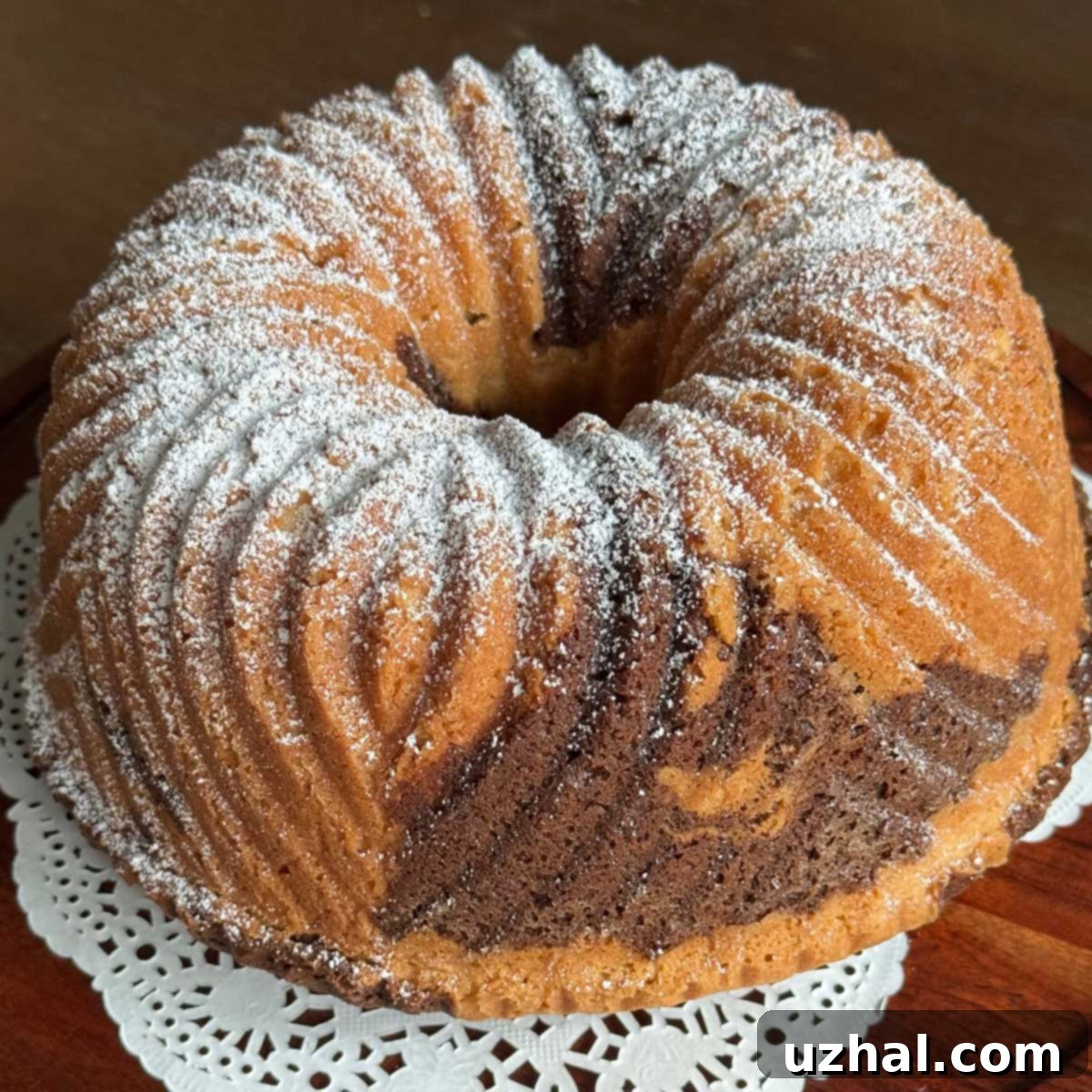Lemon-Molasses Marble Bundt Cake: A Zesty & Spicy Delight for All Seasons
Embark on a delightful baking adventure with this extraordinary Lemon-Molasses Marble Cake, a recipe that promises to tantalize your taste buds with its unique blend of bright citrus and deep, warming spices. While my personal journey to perfecting this cake was, shall we say, a bit more “colorful” than anticipated – involving a surprising amount of kitchen chaos and a few choice words – the end result was undeniably worth every moment. This isn’t just a cake; it’s an experience, a harmonious marriage of two distinct flavors that come together in a beautiful, marbled masterpiece. Prepare to be enchanted by a slice of this incredible creation, perfect for any gathering or a comforting treat on a cozy afternoon.
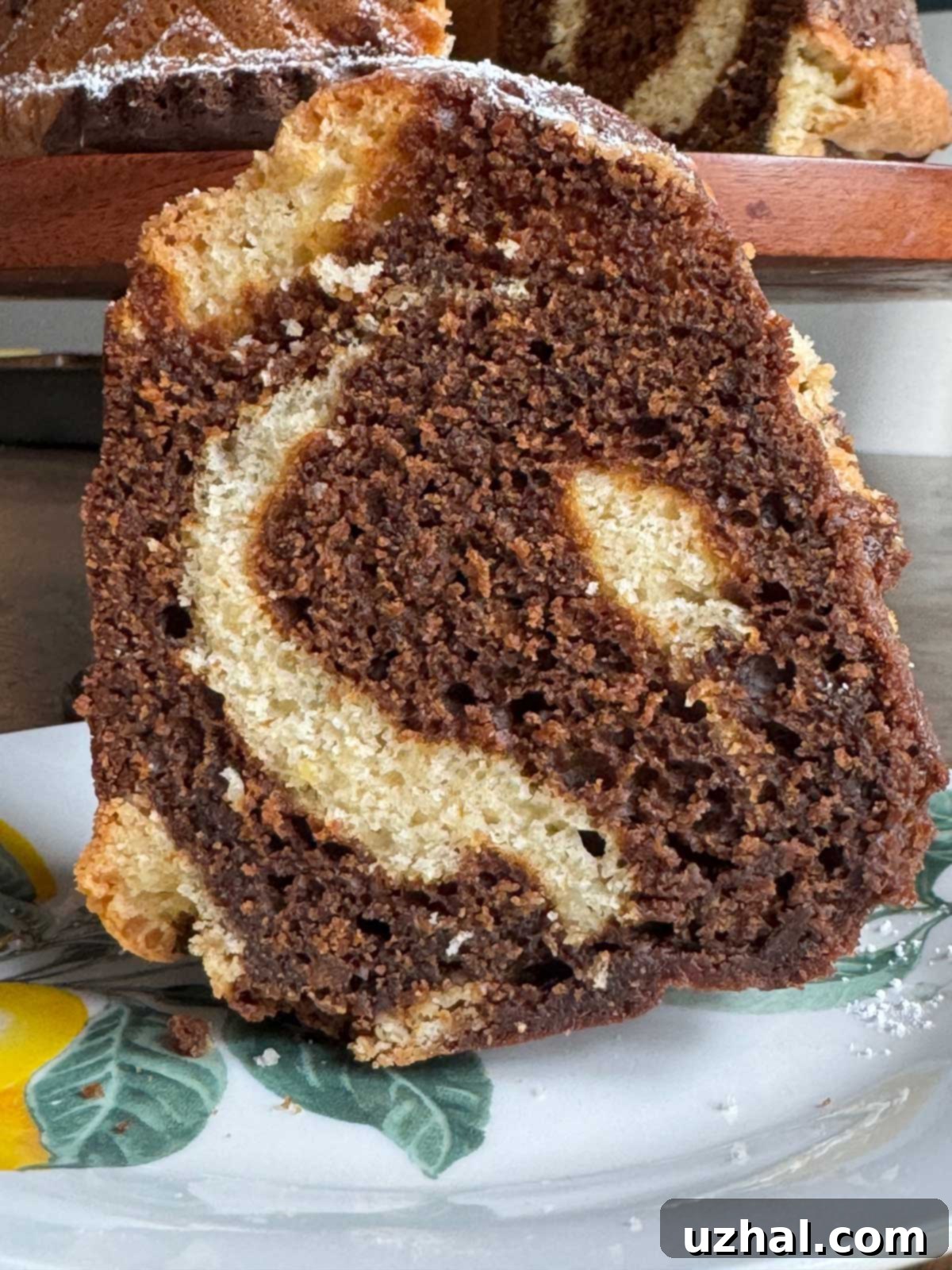
The Unexpected Baking Saga: A Lesson in Reading Recipes
You might wonder why a seemingly simple cake recipe would lead to such an expletive-laden baking session. The truth is, it wasn’t the cake’s inherent difficulty, but rather my own overconfident mindset and a regrettable failure to properly read the instructions. The recipe came to me from my daughter, a talented home baker who effortlessly whipped up this “lemon and molasses cake from Richard Sax.” She managed it with minimal equipment – no stand mixer, a basic electric oven, and perhaps just two mixing bowls. Hearing this, I mistakenly assumed the recipe would be incredibly straightforward, a walk in the park for an experienced home baker.
What I failed to account for was the sheer number of separate components this marble cake requires. Before I knew it, my kitchen counter was covered in bowls – one for the molasses batter, one for the lemon batter, and another for whipping egg whites. In hindsight, the process itself was simple enough: creaming butter and sugar, adding wet and dry ingredients in stages, and gently folding in egg whites. However, the multi-stage nature meant multiple bowls, multiple beaters, and a bit more methodical organization than I had initially budgeted for. Perhaps a handheld mixer and three dedicated mixing bowls would have been less cumbersome than repeatedly washing or swapping out my stand mixer bowls. This entire episode served as a humbling reminder: always read the recipe from start to finish before diving in, no matter how confident you feel! Even experienced bakers can benefit from a thorough pre-read, especially when tackling a new or intricate recipe.
Lemon-Molasses Marble Cake: A Delightful Contrast of Flavors
Setting aside my initial kitchen mishaps, let’s talk about the star of the show: the Lemon-Molasses Marble Cake itself. This cake is truly a standout, offering a sophisticated flavor profile that marries two seemingly disparate tastes into a cohesive and utterly delicious whole. It’s a classic marble cake, featuring distinct sections of rich, spiced molasses batter intertwined with a bright, zesty lemon batter. The visual appeal of the swirling dark and light batters is as enticing as its aroma, promising a sensory delight before the first bite.
The molasses component of the cake is wonderfully deep and complex, boasting rich, earthy notes complemented by a hint of warm spices like cinnamon and cloves. This part of the cake brings a comforting, old-fashioned charm to each bite, reminiscent of cozy autumn evenings. The lemon batter, in contrast, provides a refreshing counterpoint. It’s not overpoweringly tart, but rather a subtle, fragrant citrus lift that beautifully balances the richness of the molasses. The zest infuses the batter with a natural brightness, while a touch of lemon juice adds a gentle tang. If you prefer a more pronounced lemon flavor, a little lemon extract can be added to amplify that zesty kick, as I did to enhance its vibrancy. The cake’s texture is remarkably moist throughout, never dry, and features delightful, slightly crusty edges that add another layer of sensory enjoyment and textural contrast. In my opinion, it’s perfect as is and doesn’t require a heavy glaze; a simple dusting of powdered sugar is all it needs to elevate its elegant presentation and add a touch of sweetness.
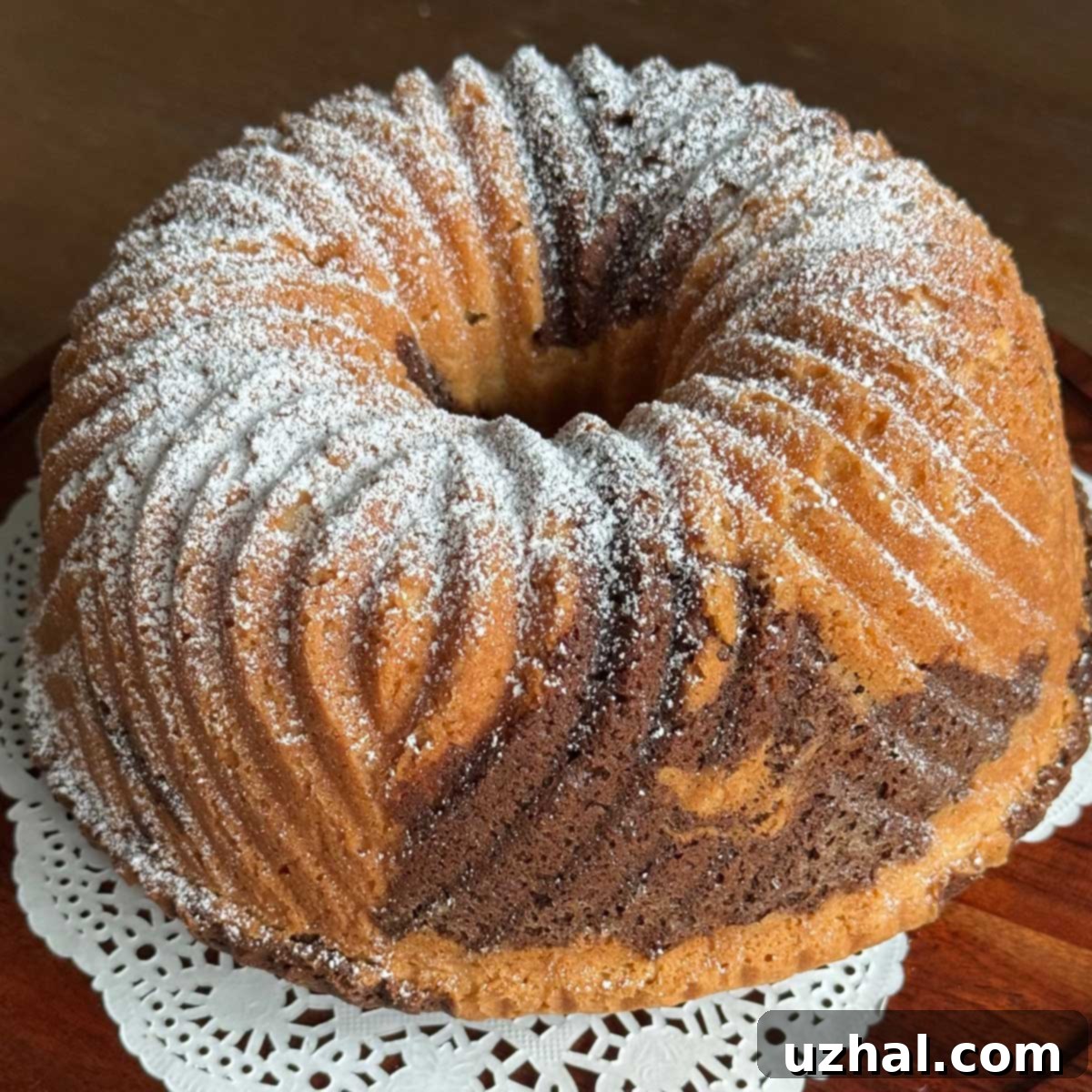
The Essential Bundt Pan: Nordic Ware Bavaria and Beyond
To truly achieve the stunning visual effect of this marble cake, especially with its intricate design, the right baking pan is absolutely crucial. For this recipe, you’ll ideally need a 10-cup tube pan or a beautifully fluted Bundt pan. As mentioned earlier, the preparation involves at least three mixing bowls: one for each batter and a third for whipping the egg whites. While having a stand mixer with multiple bowls is convenient, I’ve found that sometimes three standard mixing bowls and a reliable handheld electric mixer can be less cumbersome for recipes with multiple batter components. This setup ensures you’re not constantly washing and drying bowls, which can interrupt your baking flow and add unnecessary stress.
My particular choice for this cake was a fantastic find: a Nordic Ware Bavaria Bundt pan, which I serendipitously discovered at a local thrift store. This was my inaugural use of this specific pan, and like many second-hand treasures, its history was unknown. Had it been through a hundred dishwasher cycles? Was its non-stick coating still effective? These questions often bring a sense of trepidation when baking with intricate molds. To eliminate any anxiety about the cake sticking to the pan’s gorgeous, detailed crevices, I opted for a foolproof method: “cake goop.” This magical homemade concoction ensured a perfect release, and the cake popped out effortlessly, revealing every stunning detail of the Bavaria pan’s design without a single crumb left behind. This experience instantly boosted my confidence and made me excited to try this pan, and others with equally intricate designs, again and again. Investing in quality bakeware, especially Bundt pans, can significantly elevate your baking results and enjoyment.
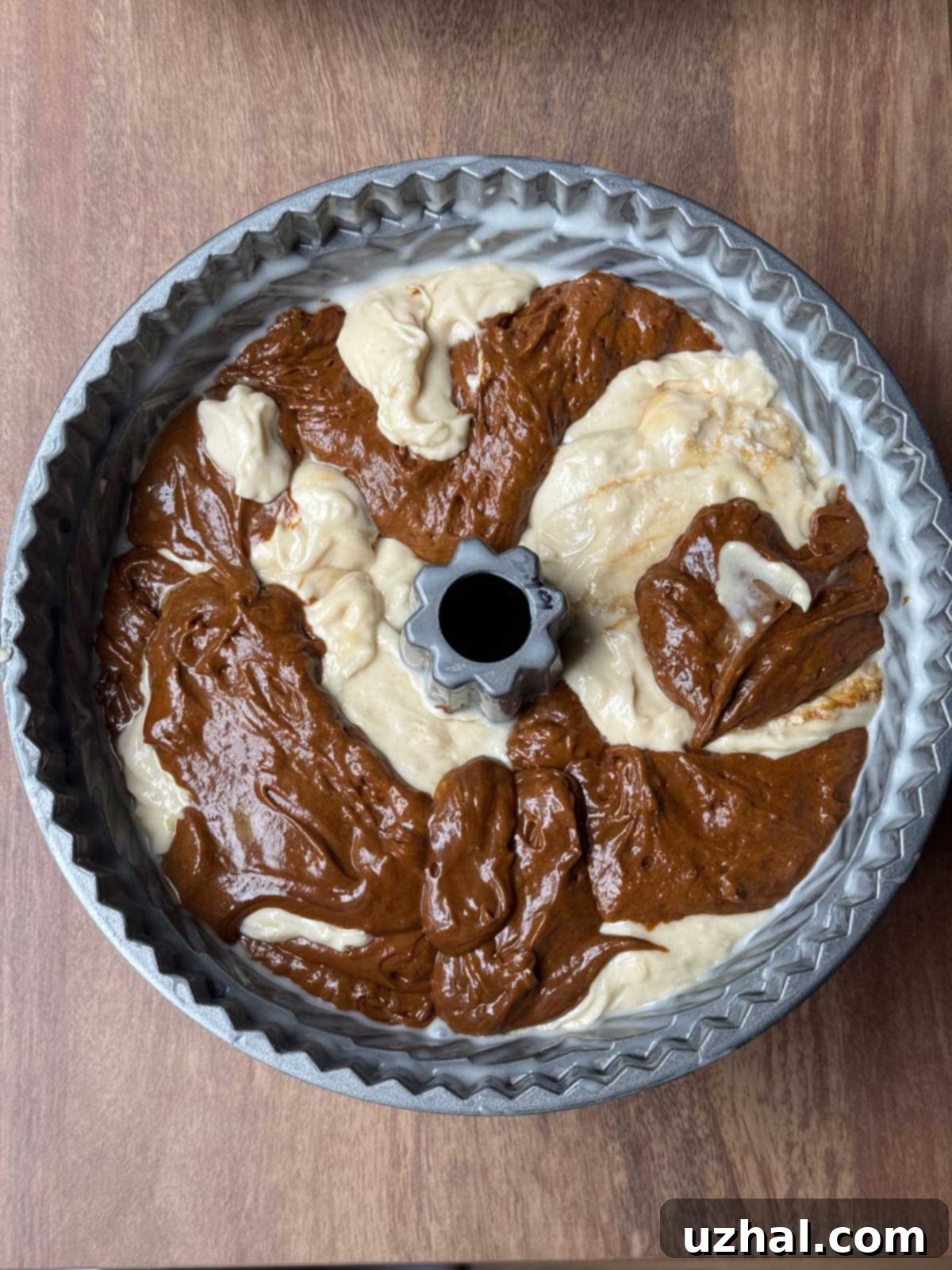
Mastering Cake Goop: Your Secret Weapon Against Sticking Cakes
One of the most common anxieties in baking, especially when working with beautiful, intricate pans like the Bavaria Bundt, is the fear of a cake sticking and ruining its presentation. The disappointment of a perfectly baked cake that crumbles upon unmolding is something every baker dreads. While commercial cooking sprays with flour can be an option, I personally dislike their distinctive chemical smell and often find them less effective on highly detailed molds where every groove needs protection. This is where “cake goop” comes to the rescue – a simple, homemade solution that guarantees your cake will release perfectly every time, preserving its intricate shape and your baking pride.
Making cake goop is incredibly easy and requires just three common kitchen staples. You’ll need equal parts: ¼ cup partially melted shortening, ¼ cup all-purpose flour, and ¼ cup neutral oil (such as vegetable or canola oil). Simply combine these three ingredients in a bowl and whisk or stir them until you achieve a smooth, uniform consistency. The mixture should be thick enough to cling to the pan but still easily brushable. Once your goop is ready, use a pastry brush to meticulously coat every nook, cranny, and crevice of your cake pan. Don’t be shy – a generous and even coating is absolutely key for intricate designs, ensuring that no part of the cake comes into direct contact with the metal. For an extra layer of assurance, especially with a thrifted pan of unknown history, I take it a step further by chilling the coated pan for about 10-15 minutes. This allows the shortening to firm up, creating a solid, non-stick barrier that works wonders in preventing sticking. This method proved absolutely perfect with my Bavaria pan, and I can now confidently recommend it for any Bundt, tube, or other decorative cake pan. Say goodbye to sticky situations and hello to perfectly released, beautifully shaped cakes every single time!
Adapting a Classic: My Personal Enhancements to Richard Sax’s Recipe
While Richard Sax’s original recipe for this Lemon-Molasses Marble Cake is undoubtedly a classic and a testament to timeless baking, I made a few subtle adjustments to tailor it to my preferences and achieve what I believe is an even more exceptional result. These modifications, though seemingly minor, significantly impacted the flavor balance and moist texture of the finished product, enhancing its overall appeal. Firstly, I increased the amount of salt in both batters. Salt is a powerful flavor enhancer in baking, not just a seasoning. A little extra helps to bring out the deep, caramelized notes of the molasses and the vibrant brightness of the lemon, preventing the cake from tasting flat and adding a delightful complexity to each bite. It truly makes the flavors “pop.”
Secondly, I opted to use sour cream instead of yogurt, which was suggested in the original recipe. Sour cream tends to have a higher fat content and a slightly richer tang, which contributes to an incredibly moist and tender crumb in cakes. This substitution also added a subtle richness that beautifully complemented both the molasses and lemon flavors, creating a more decadent mouthfeel. Regarding bake time, the recipe suggested 45 to 50 minutes. However, my cake, baked in the very thick and heavy Nordic Ware Bavaria pan, required a full hour in the oven to achieve that perfect golden-brown crust and ensure it was thoroughly cooked through to the center. Always remember that oven temperatures can vary significantly, and pan materials (like heavy cast aluminum Bundt pans) conduct heat differently, so trusting your instincts and checking for doneness with a skewer or toothpick is crucial. For the molasses, I used a mild Golden Barrel variety, which offers a lovely, less assertive molasses flavor compared to blackstrap, allowing the lemon to shine without being overwhelmed. Finally, to truly enhance and intensify the citrus notes, I added a small splash of lemon extract to the lemon batter, amplifying its zesty aroma and taste, making the lemon flavor more prominent without adding excess liquid.
Why This Lemon-Molasses Bundt Cake is a Must-Try
Despite the humorous start to my baking journey with this particular cake, I wholeheartedly, enthusiastically, and without reservation recommend making this Lemon-Molasses Marble Bundt Cake. It transcends the sum of its parts, offering a unique and memorable flavor experience that balances the robust, comforting notes of molasses with the vibrant, refreshing zing of lemon. It’s a cake that impresses both visually with its beautiful marble pattern and gastronomically with its moist texture and complex, perfectly harmonized taste. Whether you’re a seasoned baker looking for a new challenge or someone who appreciates a dessert that stands out from the crowd, this recipe is a true gem, perfect for impressing guests or simply indulging yourself and your family.
The lineage of this recipe adds to its charm and appeal. As previously mentioned, I received it from my daughter, who discovered it in Richard Sax’s acclaimed cookbook, Classic Home Desserts. Sax himself credits Mary Leize Simons of Charleston for this wonderful creation, highlighting a tradition of culinary excellence passed down through generations. This rich history makes each slice not just a dessert, but a taste of baking heritage and a connection to a long line of passionate bakers. Give it a try, and you might find your new favorite go-to cake!
- A Goop Cookie
- High Rising Banana Bread
- Duncan Hines Key Lime Layer Cake
- Small Batch Vegan Molasses Cookies
- Small 6 Cup Bundt Pan
Recipe: Lemon Molasses Bundt Cake
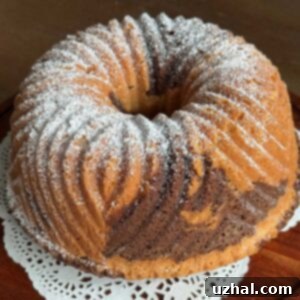
Lemon Molasses Bundt Cake
Anna
Pin Recipe
Ingredients
Molasses Batter
- 6 tablespoons unsalted butter, softened (84 grams)
- 6 tablespoons brown sugar (75 grams)
- 3 large egg yolks
- ¾ cup molasses (240 grams)
- 1 ⅔ cups all-purpose flour (weigh or measure lightly) (210 grams)
- ½ teaspoon baking soda
- ½ teaspoon cream of tartar
- ¼ teaspoon salt (my addition)
- ½ teaspoon ground cinnamon
- ¼ teaspoon each of nutmeg and ground cloves
- ⅓ cup whole milk yogurt or sour cream (70 grams)
Lemon Batter
- 6 tablespoons unsalted butter, softened (84 grams)
- 1 cup sugar (200 grams)
- 1 tablespoon lemon zest
- 1 tablespoon lemon juice
- ½ teaspoon lemon extract (optional)
- 1 ⅔ cup all-purpose flour (weigh or measure lightly) (210 grams)
- ½ teaspoon baking soda
- ½ tsp. cream of tartar
- ¼ teaspoon salt (increased from ⅛)
- ¾ cup whole milk yogurt or sour cream (170 grams)
- 3 large egg whites
- 2 tablespoons Powdered Sugar for Sprinkling
Instructions
-
Preheat oven to 350°F (175°C). Prepare your 9-inch or standard 10-cup Bundt pan by greasing and flouring it thoroughly. If using cake goop, apply it evenly as described in the section above for a perfect, non-stick surface.
-
In two separate bowls, measure out the dry ingredients for each batter: for the molasses batter (flour, baking soda, cream of tartar, salt, cinnamon, nutmeg, cloves) and for the lemon batter (flour, baking soda, cream of tartar, salt). Set these aside; this step ensures your dry ingredients are ready when needed, streamlining the process and reducing stress during mixing.
-
Molasses Batter: In a large mixing bowl, beat the softened butter and brown sugar together until the mixture is light and creamy. Incorporate each egg yolk one by one, beating well after each addition to ensure a smooth, emulsified mixture. Finally, pour in the molasses and beat until the batter is completely smooth and well combined, showing no streaks.
-
Gradually add the prepared dry ingredients for the molasses batter (from step 2) alternately with the yogurt (or sour cream) to the molasses mixture. Mix on low speed or by hand until just combined, being careful not to overmix, which can lead to a tough cake. Set this batter aside.
-
Lemon Batter: In another large mixing bowl, cream the softened butter, granulated sugar, and lemon zest until the mixture is very light and fluffy. Beat in the lemon juice, and if using, the optional lemon extract. Then, similar to the molasses batter, add the prepared dry ingredients for the lemon batter alternately with the remaining yogurt or sour cream, mixing until just combined and smooth.
-
In a separate medium-sized bowl, using clean beaters, beat the three large egg whites until they form almost stiff peaks. These egg whites will add lightness and airiness to the lemon batter. Gently fold about ¼ of the beaten egg whites into the lemon batter to lighten it up and make it easier to incorporate the rest. Then, carefully fold in the remaining whites until just incorporated, trying not to deflate the mixture too much. Don’t worry if the lemon batter seems a bit dense initially; it will lighten beautifully.
-
Now it’s time to create the marble effect! Drop 3 or 4 large dollops of the lemon batter evenly around the bottom of your prepared Bundt pan. Follow this by dropping 3 or 4 dollops of the molasses batter on top of and between the lemon batter dollops. Continue layering the batters in this alternating fashion until both batters are used up, creating distinct layers of color.
-
Once all the batter is in the pan, gently tap the pan once or twice against the countertop. This helps to settle the batter and release any large air bubbles that could cause gaps in the baked cake. To create the marble swirl, carefully insert a butter knife or a thin skewer into the batter and swirl it gently 2 or 3 times in a figure-eight or circular motion. Be careful not to overmix, as too much swirling will blend the batters completely, losing the beautiful marbled effect.
-
Bake the cake in the preheated oven for approximately 60 minutes. Begin checking for doneness at around the 50-minute mark. The cake is ready when it appears set, the edges are lightly browned, and a wooden skewer or toothpick inserted into the center comes out clean. If it’s not quite ready, continue baking in 5-minute increments until done.
-
Once baked, remove the cake from the oven and let it cool in the pan on a wire rack for 15 minutes. This cooling period is crucial for the cake to set and firm up before unmolding, making it less likely to break. After 15 minutes, carefully run the tip of a thin, flexible knife around the edges of the cake and the inner tube to loosen it from the pan. Then, invert the cake onto the wire rack to cool completely. Before serving, dust generously with powdered sugar for a simple yet elegant finish.
Notes
